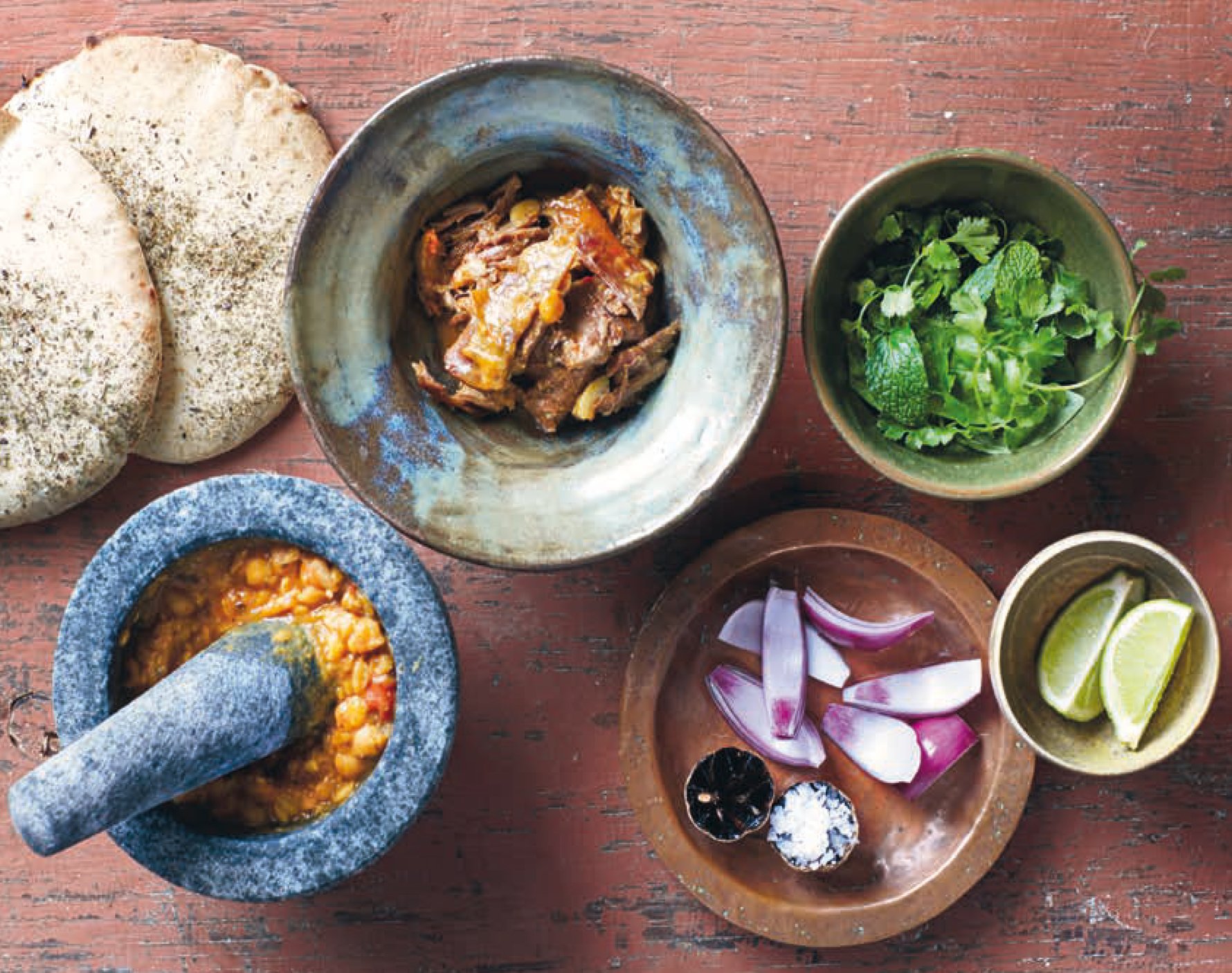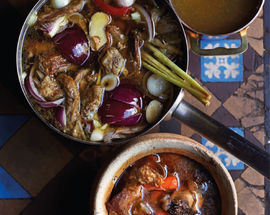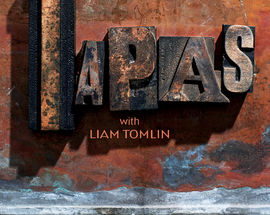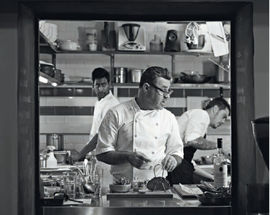Tapa originated in Spanish cuisine and refers to a snack or appetiser usually served with wine or beer. It's a style of eating that has gained much popularity with the rise of global cuisines and also suited to Asian-style cooking, and at Liam Tomlin's Cape Town eateries the chef and his team have taken these dishes to a new high.
Tomlin is Irish-born, and moved to Cape Town in 2004 having worked in some of the world's top kitchens in Ireland, Europe and Australia. There he opened Chefs Warehouse which has since expanded to a number of restaurants located in some of the finest locations in Cape Town, including perched atop in a hilltop overlooking the magnificent Constantia Valley. His focus is on the quality and integrity of ingredients, and extracting maximum flavour from even the simplest combination.
The book is not structured in formal chapters but is more an unfolding trip through different food types (mixing tastes, textures and cooking styles) and pleasingly for home cooks, each recipe fills no more than one page. There is an excellent glossary and additional recipes for sauces and stocks. The photos are sumptuous and there is also a taste of the daily life of Tomlin's restaurants with images throughout depicting the team at work in Chefs Warehouse kitchens. While we would have loved more detail on the people depicted and the story of each restaurant, this book certainly does not disappoint. This is the second edition of Tapas with Liam Tomlin and the first available for sale outside of Liam Tomlin's restaurants.
While Tomlin's restaurants have been closed under Covid lockdown in South Africa and subject to government restrictions that include no alcohol sales and a strict curfew, he has become a vocal opponent of current policy and spearheaded the recent (July) protest that drew attention to the number of jobs at risk of being lost by South Africa's restaurant industry, under the banner of #jobssaveslives.
By buying this book you'll not only be rewarded with a feast of recipes (which are magnificent to eat or just to look at on the page), you'll be giving support to a true restaurant pioneer, and someone who is doing his best to save South Africa's restaurant industry.

DIZI MORTAR AND PESTLE LAMB WITH CHICKPEAS AND FLATBREAD
Dizi is made with small chunks of meat on the bone that are simmered slowly for several hours with potato, tomatoes, beans and traditionally with a piece of lamb tail fat. It is served in a bowl with flat bread, spooned up with a squeeze of citrus juice. The bone is then removed and discarded, and the remaining meat, fat and vegetables are pounded to a coarse paste using a pestle. This purée is eaten with flat bread, pickles, onion, citrus fruit and fresh herbs.
SERVES 6
Ingredients
45ml olive oil
3 lamb shanks salt and freshly ground pepper
8 shallots peeled
6 cloves garlic peeled
7.5ml ground turmeric
5ml ground cinnamon
5ml freshly ground black pepper
15ml tomato paste
250g dried chickpeas, soaked overnight and drained
2 litres chicken stock or water
8 sprigs fresh thyme
2 bay leaves
2 large potatoes, peeled and cut into even-sized chunks
12 small plum tomatoes
selection of freshly picked herbs such as tarragon, mint or basil
onion wedges, to serve
citrus wedges, to serve
Method
- Preheat the oven to 160 °C.
- Heat the oil in a large heavy-based saucepan over a high heat. Season the lamb shanks with salt and freshly ground pepper and then seal all over until golden brown. Remove from the saucepan and set aside.
- Add the shallots, garlic and spices to the saucepan and fry over a medium heat for a few minutes until the vegetables are evenly coloured and soft. Stir in the tomato paste and cook out for 2 minutes, stirring continuously to prevent it from sticking and burning. Remove from the heat and stir in the chickpeas.
- Place the lamb shanks on top of the chickpeas and cover with chicken stock or water. Return to the heat and bring to the boil. Reduce the heat so that the stock just simmers. It is important that the cooking liquid just simmers during cooking to prevent the shanks becoming tough and chewy. Skim the surface to remove any scum that floats to the top.
- Add the thyme and bay leaves to the saucepan, cover with a lid and transfer to the oven. Cook slowly for 3–4 hours, depending on the size of the shanks, until they are tender and coming away from the bone.
- Place the potatoes and tomatoes in among the lamb shanks and return the saucepan to the oven. Cook for a further 30 minutes until the potatoes are tender.
- Carefully lift the shanks from the stock and remove the lamb from the bone. Break the meat into small chunks and return to the pan. Divide between six bowls.
- Eat the stock first, then mash the meat and vegetables with a fork, scoop it up with flat bread, and add herbs, onion and a squeeze of citrus juice.

WHITE CHOCOLATE AND PASSION FRUIT CRÈME BRÛLÉE
SERVES 8Ingredients
60 g castor sugar
7 free-range egg yolks
480 ml cream
12 vanilla pod, split and scraped
40 g white chocolate chopped
100 ml passion fruit juice
icing sugar to dust
Method
- Preheat the oven to 100 °C.
- In a bowl, beat together 30g of the castor sugar and the egg yolks until pale, doubled in volume and the sugar has dissolved.
- In a heavy-based saucepan, add the remaining sugar, cream and vanilla and bring to the boil over a medium heat.
- Pour the hot cream onto the egg yolk, mix well and then return to the saucepan. Cook very slowly over a gentle heat, stirring constantly until the mixture thickens enough to coat the back of a spoon. Remove from the heat, stir in the chocolate and passion fruit juice and mix until the chocolate has melted and is fully incorporated. Pass the custard through a fine sieve.
- Pour the custard into eight moulds. Place a roasting tray in the oven and place the crème brûlées into the tray. Pour hot water into the roasting tray to come three-quarters the way up the side of the moulds. Cook the crème brûlées for 60-70 minutes until they just reach setting point. Gently shake the tray. The crème brûlées will still be a little soft in the centre. If they appear to be too runny, return to the oven for a further 10 minutes.
- Carefully remove the roasting tray from the oven and allow the crème brûlées to cool in the water bath. When cold, remove the crème brûlées from the water bath, cover with clingfilm and refrigerate for 8 hours or preferably overnight.
- To serve, dust each brûlée generously with icing sugar and glaze with a blowtorch until the sugar melts and begins to caramelise, taking care not to burn the sugar as it will become bitter. For a crisp glaze, dust and glaze the brûlée a second time.







Comments